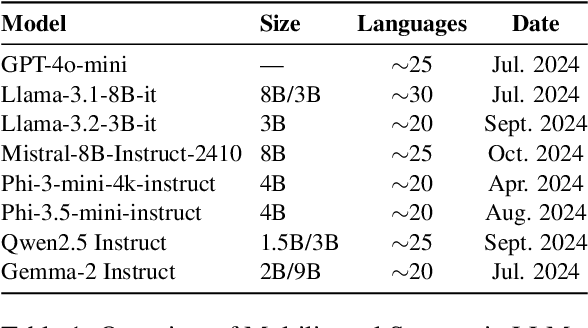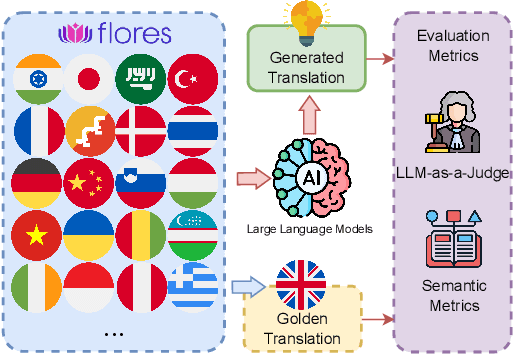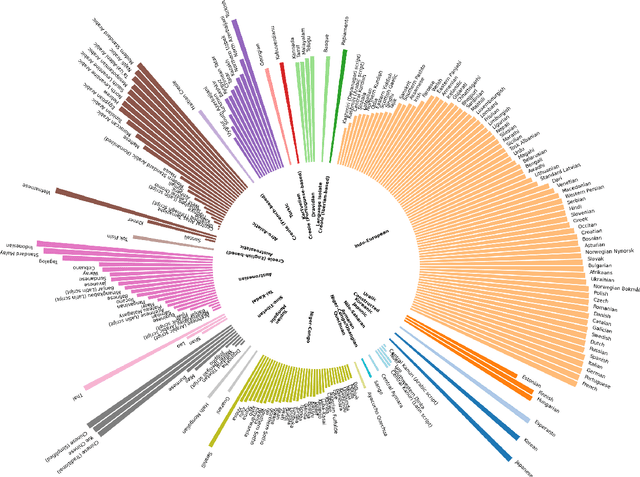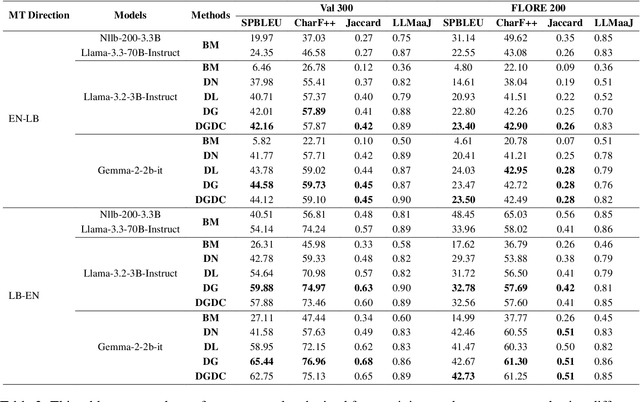Radu State
Temporal-Spatial Tubelet Embedding for Cloud-Robust MSI Reconstruction using MSI-SAR Fusion: A Multi-Head Self-Attention Video Vision Transformer Approach
Dec 10, 2025Abstract:Cloud cover in multispectral imagery (MSI) significantly hinders early-season crop mapping by corrupting spectral information. Existing Vision Transformer(ViT)-based time-series reconstruction methods, like SMTS-ViT, often employ coarse temporal embeddings that aggregate entire sequences, causing substantial information loss and reducing reconstruction accuracy. To address these limitations, a Video Vision Transformer (ViViT)-based framework with temporal-spatial fusion embedding for MSI reconstruction in cloud-covered regions is proposed in this study. Non-overlapping tubelets are extracted via 3D convolution with constrained temporal span $(t=2)$, ensuring local temporal coherence while reducing cross-day information degradation. Both MSI-only and SAR-MSI fusion scenarios are considered during the experiments. Comprehensive experiments on 2020 Traill County data demonstrate notable performance improvements: MTS-ViViT achieves a 2.23\% reduction in MSE compared to the MTS-ViT baseline, while SMTS-ViViT achieves a 10.33\% improvement with SAR integration over the SMTS-ViT baseline. The proposed framework effectively enhances spectral reconstruction quality for robust agricultural monitoring.
NegBLEURT Forest: Leveraging Inconsistencies for Detecting Jailbreak Attacks
Nov 14, 2025



Abstract:Jailbreak attacks designed to bypass safety mechanisms pose a serious threat by prompting LLMs to generate harmful or inappropriate content, despite alignment with ethical guidelines. Crafting universal filtering rules remains difficult due to their inherent dependence on specific contexts. To address these challenges without relying on threshold calibration or model fine-tuning, this work introduces a semantic consistency analysis between successful and unsuccessful responses, demonstrating that a negation-aware scoring approach captures meaningful patterns. Building on this insight, a novel detection framework called NegBLEURT Forest is proposed to evaluate the degree of alignment between outputs elicited by adversarial prompts and expected safe behaviors. It identifies anomalous responses using the Isolation Forest algorithm, enabling reliable jailbreak detection. Experimental results show that the proposed method consistently achieves top-tier performance, ranking first or second in accuracy across diverse models using the crafted dataset, while competing approaches exhibit notable sensitivity to model and data variations.
Limitations of Normalization in Attention Mechanism
Aug 25, 2025Abstract:This paper investigates the limitations of the normalization in attention mechanisms. We begin with a theoretical framework that enables the identification of the model's selective ability and the geometric separation involved in token selection. Our analysis includes explicit bounds on distances and separation criteria for token vectors under softmax scaling. Through experiments with pre-trained GPT-2 model, we empirically validate our theoretical results and analyze key behaviors of the attention mechanism. Notably, we demonstrate that as the number of selected tokens increases, the model's ability to distinguish informative tokens declines, often converging toward a uniform selection pattern. We also show that gradient sensitivity under softmax normalization presents challenges during training, especially at low temperature settings. These findings advance current understanding of softmax-based attention mechanism and motivate the need for more robust normalization and selection strategies in future attention architectures.
Vision Transformer-Based Time-Series Image Reconstruction for Cloud-Filling Applications
Jun 24, 2025Abstract:Cloud cover in multispectral imagery (MSI) poses significant challenges for early season crop mapping, as it leads to missing or corrupted spectral information. Synthetic aperture radar (SAR) data, which is not affected by cloud interference, offers a complementary solution, but lack sufficient spectral detail for precise crop mapping. To address this, we propose a novel framework, Time-series MSI Image Reconstruction using Vision Transformer (ViT), to reconstruct MSI data in cloud-covered regions by leveraging the temporal coherence of MSI and the complementary information from SAR from the attention mechanism. Comprehensive experiments, using rigorous reconstruction evaluation metrics, demonstrate that Time-series ViT framework significantly outperforms baselines that use non-time-series MSI and SAR or time-series MSI without SAR, effectively enhancing MSI image reconstruction in cloud-covered regions.
Exploring the Impact of Temperature on Large Language Models:Hot or Cold?
Jun 08, 2025



Abstract:The sampling temperature, a critical hyperparameter in large language models (LLMs), modifies the logits before the softmax layer, thereby reshaping the distribution of output tokens. Recent studies have challenged the Stochastic Parrots analogy by demonstrating that LLMs are capable of understanding semantics rather than merely memorizing data and that randomness, modulated by sampling temperature, plays a crucial role in model inference. In this study, we systematically evaluated the impact of temperature in the range of 0 to 2 on data sets designed to assess six different capabilities, conducting statistical analyses on open source models of three different sizes: small (1B--4B), medium (6B--13B), and large (40B--80B). Our findings reveal distinct skill-specific effects of temperature on model performance, highlighting the complexity of optimal temperature selection in practical applications. To address this challenge, we propose a BERT-based temperature selector that takes advantage of these observed effects to identify the optimal temperature for a given prompt. We demonstrate that this approach can significantly improve the performance of small and medium models in the SuperGLUE datasets. Furthermore, our study extends to FP16 precision inference, revealing that temperature effects are consistent with those observed in 4-bit quantized models. By evaluating temperature effects up to 4.0 in three quantized models, we find that the Mutation Temperature -- the point at which significant performance changes occur -- increases with model size.
Small Language Models in the Real World: Insights from Industrial Text Classification
May 21, 2025Abstract:With the emergence of ChatGPT, Transformer models have significantly advanced text classification and related tasks. Decoder-only models such as Llama exhibit strong performance and flexibility, yet they suffer from inefficiency on inference due to token-by-token generation, and their effectiveness in text classification tasks heavily depends on prompt quality. Moreover, their substantial GPU resource requirements often limit widespread adoption. Thus, the question of whether smaller language models are capable of effectively handling text classification tasks emerges as a topic of significant interest. However, the selection of appropriate models and methodologies remains largely underexplored. In this paper, we conduct a comprehensive evaluation of prompt engineering and supervised fine-tuning methods for transformer-based text classification. Specifically, we focus on practical industrial scenarios, including email classification, legal document categorization, and the classification of extremely long academic texts. We examine the strengths and limitations of smaller models, with particular attention to both their performance and their efficiency in Video Random-Access Memory (VRAM) utilization, thereby providing valuable insights for the local deployment and application of compact models in industrial settings.
Is LLM the Silver Bullet to Low-Resource Languages Machine Translation?
Mar 31, 2025



Abstract:Low-Resource Languages (LRLs) present significant challenges in natural language processing due to their limited linguistic resources and underrepresentation in standard datasets. While recent advancements in Large Language Models (LLMs) and Neural Machine Translation (NMT) have substantially improved translation capabilities for high-resource languages, performance disparities persist for LRLs, particularly impacting privacy-sensitive and resource-constrained scenarios. This paper systematically evaluates the limitations of current LLMs across 200 languages using benchmarks such as FLORES-200. We also explore alternative data sources, including news articles and bilingual dictionaries, and demonstrate how knowledge distillation from large pre-trained models can significantly improve smaller LRL translations. Additionally, we investigate various fine-tuning strategies, revealing that incremental enhancements markedly reduce performance gaps on smaller LLMs.
LongKey: Keyphrase Extraction for Long Documents
Nov 26, 2024Abstract:In an era of information overload, manually annotating the vast and growing corpus of documents and scholarly papers is increasingly impractical. Automated keyphrase extraction addresses this challenge by identifying representative terms within texts. However, most existing methods focus on short documents (up to 512 tokens), leaving a gap in processing long-context documents. In this paper, we introduce LongKey, a novel framework for extracting keyphrases from lengthy documents, which uses an encoder-based language model to capture extended text intricacies. LongKey uses a max-pooling embedder to enhance keyphrase candidate representation. Validated on the comprehensive LDKP datasets and six diverse, unseen datasets, LongKey consistently outperforms existing unsupervised and language model-based keyphrase extraction methods. Our findings demonstrate LongKey's versatility and superior performance, marking an advancement in keyphrase extraction for varied text lengths and domains.
Mitigating federated learning contribution allocation instability through randomized aggregation
May 13, 2024Abstract:Federated learning (FL) is a novel collaborative machine learning framework designed to preserve privacy while enabling the creation of robust models. This paradigm addresses a growing need for data security by allowing multiple participants to contribute to a model without exposing their individual datasets. A pivotal issue within this framework, however, concerns the fair and accurate attribution of contributions from various participants to the creation of the joint global model. Incorrect contribution distribution can erode trust among participants, result in inequitable compensation, and ultimately diminish the willingness of parties to engage or actively contribute to the federation. While several methods for remunerating participants have been proposed, little attention was given to the analysis of the stability of these methods when evaluating contributions, which is critical to ensure the long-term viability and fairness of FL systems. In this paper, we analyse this stability through the calculation of contributions by gradient-based model reconstruction techniques with Shapley values. Our investigation reveals that Shapley values fail to reflect baseline contributions, especially when employing different aggregation techniques. To address this issue, we extend on established aggregation techniques by introducing FedRandom, which is designed to sample contributions in a more equitable and distributed manner. We demonstrate that this approach not only serves as a viable aggregation technique but also significantly improves the accuracy of contribution assessment compared to traditional methods. Our results suggest that FedRandom enhances the overall fairness and stability of the federated learning system, making it a superior choice for federations with limited number of participants.
Cross Domain Early Crop Mapping using CropGAN and CNN Classifier
Jan 15, 2024



Abstract:Driven by abundant satellite imagery, machine learning-based approaches have recently been promoted to generate high-resolution crop cultivation maps to support many agricultural applications. One of the major challenges faced by these approaches is the limited availability of ground truth labels. In the absence of ground truth, existing work usually adopts the "direct transfer strategy" that trains a classifier using historical labels collected from other regions and then applies the trained model to the target region. Unfortunately, the spectral features of crops exhibit inter-region and inter-annual variability due to changes in soil composition, climate conditions, and crop progress, the resultant models perform poorly on new and unseen regions or years. This paper presents the Crop Generative Adversarial Network (CropGAN) to address the above cross-domain issue. Our approach does not need labels from the target domain. Instead, it learns a mapping function to transform the spectral features of the target domain to the source domain (with labels) while preserving their local structure. The classifier trained by the source domain data can be directly applied to the transformed data to produce high-accuracy early crop maps of the target domain. Comprehensive experiments across various regions and years demonstrate the benefits and effectiveness of the proposed approach. Compared with the widely adopted direct transfer strategy, the F1 score after applying the proposed CropGAN is improved by 13.13% - 50.98%
 Add to Chrome
Add to Chrome Add to Firefox
Add to Firefox Add to Edge
Add to Edge